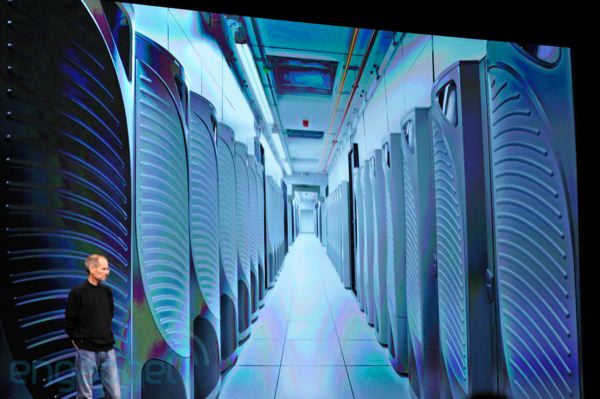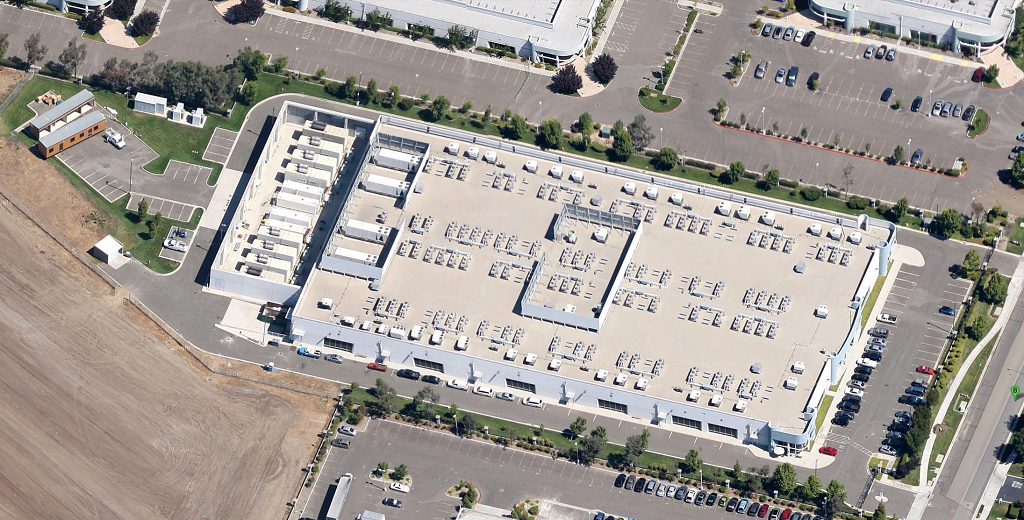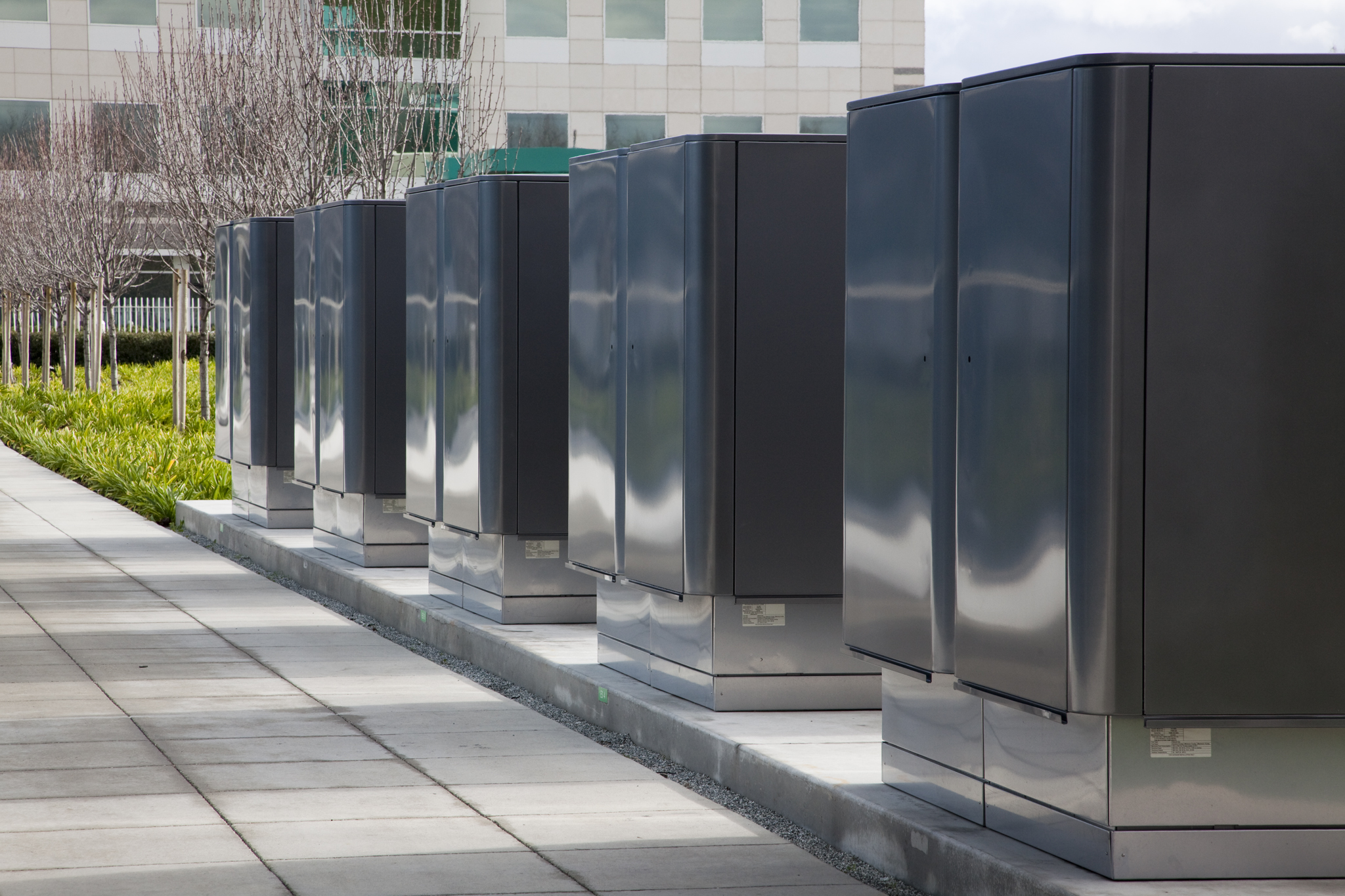Apple's Apple Green Data Centers - Pragmatic Creativity
 "I will call the company" Apple "(Apple), if by five o'clock in the morning the next day no one offers a better name ..."
"I will call the company" Apple "(Apple), if by five o'clock in the morning the next day no one offers a better name ..."Steve Jobs, from the history of the creation of Apple
Apple products, like the brand itself, have long become a symbol of innovation and creativity. It's time to talk about the data centers of this company.
Apple, created by a creative ideologist and charismatic leader Steve Jobs, has always been distinguished by an original approach to the release of its products and services, most of which were pioneers in their field. At the same time, Apple has always had a well-thought-out financial component, which allowed the company to actively develop and keep afloat, not just following market trends, but creating new market segments.
')
Interestingly, strategically, the company has never been embarrassed to position its products as a kind of “elite”, closed architecture that is as user friendly as possible and at the same time as closed as possible. Therefore, with the development of the Internet, when it became possible to store music records, install applications and develop web services, the company immediately followed the path of developing its data centers that can provide fans with their own power and offer as much as possible to centralize all services on Apple’s single portal. bypassing the intermediate path with the rental of premises and resources. That is why in the future, the company was one of the first to provide cloud services that were in excellent agreement with Apple’s global strategies.
Information on Apple data centers is extremely small: the company does not try to make them public by posting detailed reports and conducting excursions. At the same time, in the era of the Internet, it is difficult to conceal anything from the general public, so let's follow a brief history of the development of Apple data centers.
So, the beginning of the construction of the first data center was laid in 2001. The data center was located in Cupertino, not far from Apple’s headquarters in California (USA). In the data center was placed just over 2000 servers.
The second data center was purchased by Apple in 2006 in Newark (photo 1), California. Previously, this data center was built by WorldCom. Its area was about 10,000 square meters. meters After this transaction, a data center of 8,300 square meters was acquired. meters in Santa Clara, but its power has not been fully utilized.

Photo 1. Data Center in Newark
Over time, it became clear that for a long time the capacities of these sites would not be enough - a data center of much larger size and capacity would be required. Therefore, the idea arose to build a larger data center for the tasks of the then still beginning to gain momentum in the iCloud cloud service.
Work on the creation of a new data center began in 2007 with a search for a site for the future data center. Based on the analysis, two sites were selected: one in Virginia, the second in North Carolina. Thanks to the more favorable tax breaks that Apple received in North Carolina, the scales leaned toward this region. Interestingly, companies such as Facebook, AT & T have built data centers in the same region. (Even Google considered this area as a possible site before starting the construction of a data center in Lenoir City.)
Initially it was planned to buy the building of a textile factory, but by the standards of the company, its space was not enough for a data center, even for a short time. The authorities of the town of Meiden, in order not to lose an investor, offered a large plot of land just five kilometers from this place. In 2009, a site of 1,032,000 square meters was acquired near highway No. 321. meters, for which Apple paid $ 3.5 million. An interesting fact: part of the land had to be purchased from a married couple, and 4,000 square meters. meters of private property were bought from them for a record $ 1.7 million. The auction lasted long enough, the deal received much publicity, and in the press it was called the “golden acre”. The family, which 43 years ago bought this land for only $ 6,000, after a deal with Apple representatives, acquired 200,000 sq. M. meters of land and built a luxury home. That's what it means to successfully position your house near the main thoroughfare!
The land plot was conditionally divided into two parts - according to the construction lines. The program of the first stage of construction was called Dolphin (“Dolphin”), the program of the second stage was Dolphin 2 (photo 2).

Photo 2. Layout of the site: the white building in the photo is the data center of the first stage, next is a backup place for the second building (second stage)
It is symbolic that the data center received the letter “i” (like most Apple products) and became known as iDataCenter. The queues are built according to the standard design, so the data centers have mirror layouts. The area of each building is about 48,000 square meters. meters (By the way, in translated Russian-language materials quite often meters appeared instead of square feet, which caused a curiosity in the press: the data center was called almost the largest in the world), the total design capacity of the data center is 20 MW. It is assumed that the data center can be expanded using modular container data centers in the vicinity of the NxGen production building. Next to this site are two arrays of solar batteries with a total capacity of 20 MW (photo 3). The second source of power supply, which is also used for this data center, is a biogas-powered power station. It is obtained from the decomposition of biomass, which is taken from the nearest landfill. The methane produced from biogas is cleaned and accumulated. Power plant capacity is 5 MW. The technology is not new, but the familiar principle of a cogeneration plant for generating electricity is not used here - it is obtained chemically: by oxidizing methane in solid oxide fuel cells from the Bloom Box Energy Server (photo 4). But these are not final figures: it is planned to increase the capacity of both sources to 40 MW (photo 5).

Photo 3. General layout of the area: at the top - a fuel cell farm (green rectangle), in the center - a data center (white polygon), on the right - an array of solar cells (a large green polygon).

Photo 4. Bloom Box biogas fuel cells.

Photo 5. Solar panels on the background of the rising sun look enchanting
As for the cooling system, it uses a water system with an economizer, thanks to which the heat exchangers are cooled with outside air (without using chiller groups) about 75% of the time in a year. Moreover, Apple has stated that the chiller group is rarely turned on: only at a time when preferential electricity tariffs are in force.
The cooled coolant is stored in storage tanks located near the building (photo 6). This approach saves about 10 MW / hour of cooling per day.

Photo 6. Water storage tanks and powerful protective perimeter
Other measures to reduce energy costs are also applied to the iDataCenter: the data center is painted white outside to reduce the heat from the sun; power supply equipment in racks three-phase; LED lamps and variable speed fans are used throughout the building. For this “friendliness” to the environment, this data center was awarded a LEED Platinum certificate.
HP equipment is actively used as IT equipment, data storage systems are TerraData and NetApp.
However, the construction of Apple data centers is not completed: in October 2012, work began on another large data center - in Prineville, Oregon (by the way, Facebook’s data center was already built across the road, besides, in the same region there are Google and Amazon data centers). The reason for the popularity of this area - the exemption from property tax, which provide the local authorities. Information about this object is covered with a veil of secrecy, like the date of completion of its construction, but, presumably, the power of the data center will be about 20 MW. It is planned to build two lines, each of which will be an independent building with an area of 31,500 square meters. meters The company plans to transfer this facility to power from alternative sources of electricity. It also assumes widespread use of container data centers NxGen (photo 7).

Photo 7. Modular data center NxGen, which actively uses Apple
Considering the history of the formation of Apple data centers, one can see certain trends characteristic of this company. First, the goals of the data centers are clearly marked: if the first one was a launch pad, then the second and third are data centers for storing iTunes and AppStore content. The deployment of iCloud cloud technologies required the company to create large, own data centers with high requirements for energy efficiency and environmental friendliness in order to reduce their maintenance costs.
Secondly, the company changed the concept of buying a ready-made data center to the concept of building its own data center. And all this despite the fact that the purchased data centers cost her more than two times cheaper than the average market value. It can be assumed that the implementation of large data centers is too tied to the client's business model, and the data center of one large company would be completely inappropriate for another, having a different business from it. Accordingly, to buy a data center that ideally satisfies all the characteristics, Apple would not have done.
Thirdly, the transfer of data centers to 100% electricity supply from renewable energy sources has an effect not only in terms of enhancing the company's image, but also a very real economic effect and stabilizing the cost of maintenance. It is noteworthy that Apple is focusing on this factor, and not on a record decrease in PUE. The non-volatility of data centers makes it possible not to become attached to being close to large power stations, which means it reduces the cost of the power supply infrastructure.
Konstantin Kovalenko
Journal TsODy.RF №3 May 2013
Source: https://habr.com/ru/post/195520/
All Articles